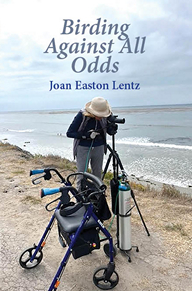I returned to Joshua Tree for a quick visit last week.
Once again, I’m astounded at the strange beauty of the Joshua Trees, the views out to snow-capped Mount San Gorgonio and Mount San Jacinto in the distance, and the wonderful diversity of our natural world here in Southern California.
The contrast between habitats on the gentle coastal plain where I live and those of the stark Mojave Desert where I visited strikes me as being unique. Where else can you drive a few hours and be suddenly immersed in those dry, dusty washes, outlandish forests of Joshua Trees, and giant stacks of granite boulders?
I last visited Joshua Tree before it became a National Park. The interpretive signs are great now, and the Visitors Center and Headquarters building in the town of Twenty-nine Palms is fantastic.
Before arriving at Twenty-nine Palms, we began our explorations at Big Morongo Canyon Preserve. This is a fascinating small preserve complete with a guided nature trail following a boardwalk through several habitats.
Morongo is an oasis that was used for centuries by the Serrano and Cahuilla Indians. Tall bright green Fremont Cottonwoods form a small forest that shelters a marshy area. The precious water attracts all sorts of migrating birds in spring and fall. Nestled in the barren hills of the Little San Bernardino Mountains, this oasis is one of the best in Southern California for attracting birds.
Alas, we were too early in the season to experience the spring bird migration (which starts in early April and spreads into May), but the cool temperatures and lack of crowds more than made up for it.
At the entrance to Joshua Tree National Park, we stopped to check out the Visitors Center and Headquarters. As we walked into the building, we saw a Cactus Wren and heard it’s “churr, churr, churr” call. Right there where people were coming and going at the entrance, the wren was busily carrying nesting material into a large cholla cactus that grew beside the path. The devilish spines of the cholla don’t bother the Cactus Wren, but they’re a great deterrent to predators.
We walked around behind the cholla and saw that large pieces of straw and other fibers lined a sort of tunnel that led down into the globular nest of sticks. The wren made several trips in and out, once carrying a feather with which to line the inner portion of the nest.
In 1922, Florence Merriam Bailey, a pioneer in early Western bird observation, wrote: ” In form, the Cactus Wren’s nest suggests a retort [ a bulb of glass with a bent beak used in laboratories ], having a large globular chamber about 6 inches in diameter approached through a long passageway or entrance, the whole normally about 12 inches in length, the mouth of the entrance being about 3 inches above the base of the globular chamber. This nest chamber in course of years becomes a thick, felted mass of gray, weathered plant fibers so hard that saucer-like sections sometimes crack off from the back, showing the solid bottom of the nest. The entrance, on the contrary, is made of long straw-like plant stems, which may easily get blown about and so often need replenishing,”
Comparing the nest before me with this description, I was delighted to note the wispy, long grasses of the nest tunnel we saw at the Headquarters and the tight ball of sticks it led into, and I was pleased that the technique of the Cactus Wren’s nest building hadn’t changed much since 1922!
(TO BE CONTINUED)

